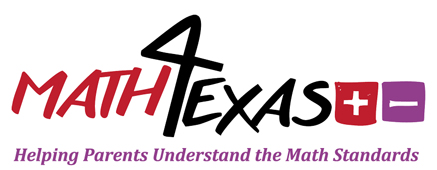T.i.P.S.
-
 In sixth grade, students compared two rules verbally, numerically, graphically, and symbolically in the form of y = ax or y = x + a in order to differentiate between additive and multiplicative relationships. Students also were exposed to examples of rates as the comparison by division of two quantities having different attributes, including rates as quotients. In sixth grade, students also represented mathematical and real-world problems involving ratios and rates using scale factors, tables, graphs, and proportions.In seventh grade, students must use their knowledge to represent constant rates of change, which is the predictable rate at which a given variable alters over a certain period of time by representing and identifying this change when given pictorial, vertical or horizontal tables, verbal, numeric, graphical, and algebraic expressions. Students may encounter applying multiple representations to graphing relationships with constant rates of change.
In sixth grade, students compared two rules verbally, numerically, graphically, and symbolically in the form of y = ax or y = x + a in order to differentiate between additive and multiplicative relationships. Students also were exposed to examples of rates as the comparison by division of two quantities having different attributes, including rates as quotients. In sixth grade, students also represented mathematical and real-world problems involving ratios and rates using scale factors, tables, graphs, and proportions.In seventh grade, students must use their knowledge to represent constant rates of change, which is the predictable rate at which a given variable alters over a certain period of time by representing and identifying this change when given pictorial, vertical or horizontal tables, verbal, numeric, graphical, and algebraic expressions. Students may encounter applying multiple representations to graphing relationships with constant rates of change.
Example
-
Using the coordinate plane shown below, find the rate of change represented.
Digital Tools
-
Click on the following links for interactive games.
Resources
-
Click on the following links for more information.
TEKS
-
Readiness Standard
7.4 Proportionality. The student applies mathematical process standards to represent and solve problems involving proportional relationships. The student is expected to:
(A) represent constant rates of change in mathematical and real-world problems given pictorial, tabular, verbal, numeric, graphical, and algebraic representations, including d = rt





 Click
Click 

